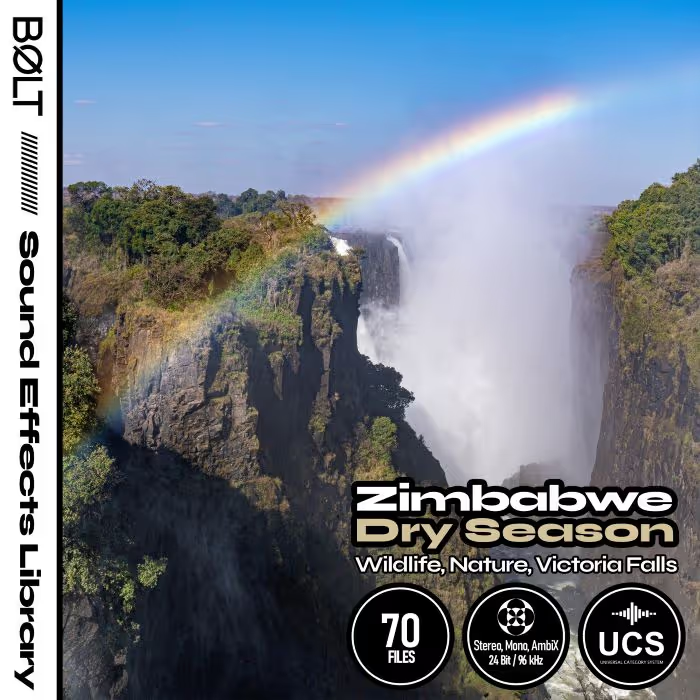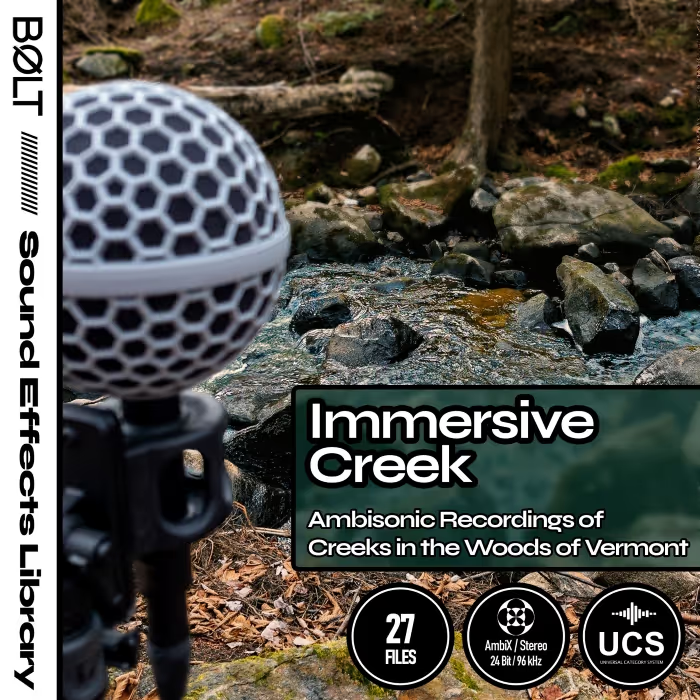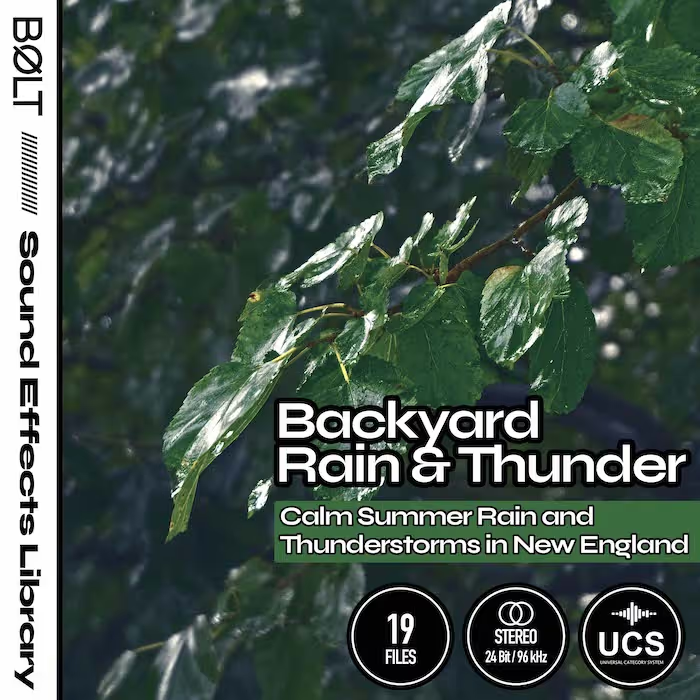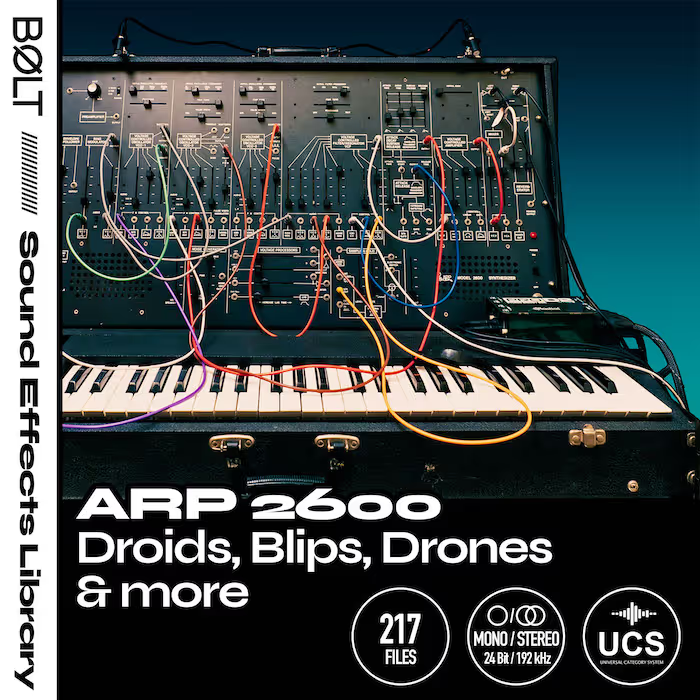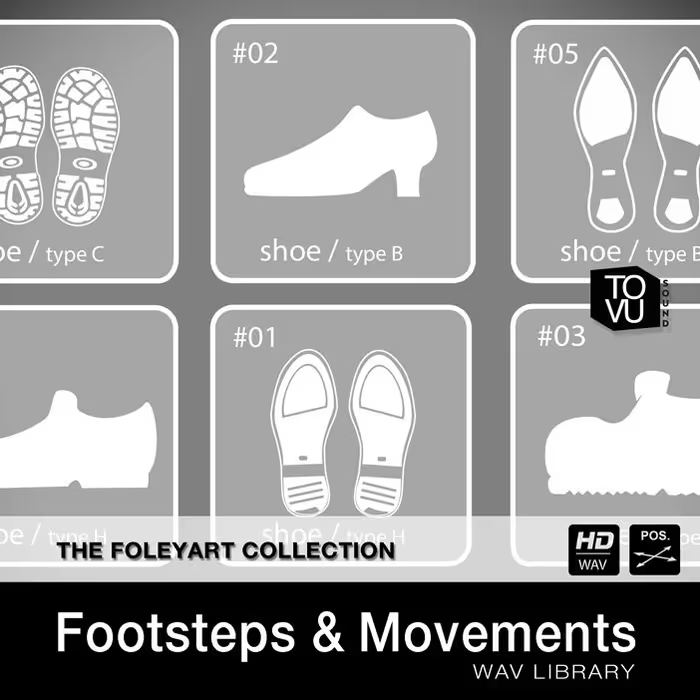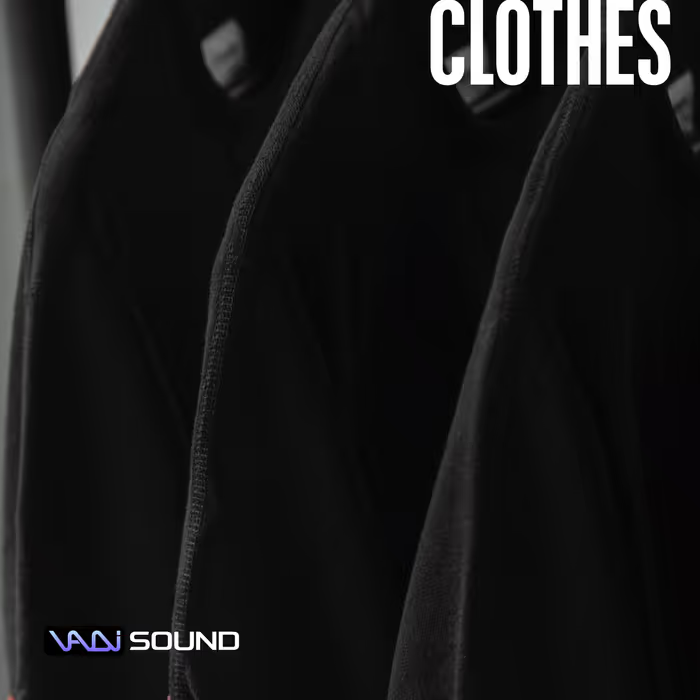After having used almost all major DAWs, REAPER is the one that has truly rocked my world and is a piece of software I have become immensely passionate about. Over 20 years of recording, I’ve used Reason, Cubase, Nuendo, Pro Tools, Logic, Ableton, and Digital Performer, and still, REAPER is the one DAW that truly feels like home.
Fundamentally, I think the main reason for this is that REAPER doesn’t feel like it’s stuck in its ways or weighed down from being owned by a giant, faceless corp. It encourages curiousity, tweaking, redesigning, and shaping it into whatever you want it to be – and that’s what makes it so powerful.
It can run on a potato of a computer and is compatible with operating systems all the way back to Windows XP while also being running on the latest MacOS and Linux releases. The installer comes in at only 15mb, and, most perplexingly of all, it can even run as a portable install, launching straight from a flash drive on any PC!
Another amazing thing about REAPER, and the reason for writing this article, is the amazing community behind it. Its powerful APIs, scripting language, and support for deep extensibility has led to an incredible number of user-made helpers, plug-ins, tools, and themes that can help you create the DAW of your dreams, with features that exceed just about any other offering on the market.
Whether you’re a sound designer, composer, or both – in this article I want to specifically highlight a number of FREE tools made by independent creators, as well as some lesser-known native features that will seriously level up your game audio workflow and save you valuable time every day.
This article is quite long and I expect you to want to try out some of these tools immediately, so I recommend bookmarking this page (cmd+d / ctrl+d) so you can return to it at any point. There’s also a good chance I’ll be updating this article in the future with other free tools I find along the way!
Note: Some of these scripts will require some 3rd party dependencies and extensions to work. You can download all of them via the buttons below. An added bonus is that ReaPack allows you to search from a vast repository of extensions right within REAPER by clicking on Extensions > ReaPack > Browse Packages. Looking for a specific command or feature you can’t find? Chances are you’ll find it in ReaPack!
Get ReaPack > https://reapack.com/
Get js_ReaScriptAPI > https://forum.cockos.com/showthread.php?t=212174
Get SWS > https://www.sws-extension.org/
Global Sampler • LKC Variator • nvk_SEARCH • Mouse Wheel = Item Rate • Peaks & Valleys • Render Blocks • Stem Manager • UCS Toolkit • Wwhisper • ReaOpen • Proper Nudging
Hidden in Plain Sight – built-in features to speed up your workflow:
Rubber Band Library • HTML Render Statistics • Monitoring FX • Mix Knobs Everywhere • Parallel Effects Chains • FX Containers
Bonus:
Sound libraries from Chris “BØLT“ Bolte • (Much!) more about REAPER for game audio and sound design
Global Sampler
Capture Everything, Never Lose Anything.
Script by Bird’s Things
We’re starting off with a juggernaut! This script / plug-in is arguably the most famous on this list and one I think no REAPER user should live without. It’s an incredible productivity booster and allows you to play with plug-ins and mangle sounds without every losing any of your happy accidents.
Simply put, Global Sampler records anything and everything you do in REAPER, regardless of whether you hit Play first. It consists of a script that invokes its UI (the waveform view ideally placed at the top of bottom of your window), and a plug-in you can place on your master or listen bus which is responsible for actually sending audio into Global Sampler.
This not only makes resampling a breeze, it also means that you’ll never lose any cool and unique sounds that you may get while browsing plug-in presets, tweaking parameters, or just causing mayhem while mashing your MIDI keyboard.
Global Sampler is always recording everything you do within the DAW. Simply select the desired portion of audio in Global Sampler’s interface and drag it wherever you want.
One of the best workflow accelerators for sound design is to commit real-time processing to audio and continue designing your sounds from there. It will prevent spending too much time tweaking parameters on the hunt for that perfect sound and lets you move forward in a more ruthless and effective way. Global Sampler makes this process as low-friction as possible.
Global Sampler Demo
Get Global Sampler > https://forum.cockos.com/showthread.php?p=2506514
LKC Variator
Lightning-Fast Iteration, Variations, and Utter Mayhem.
Script by LKC Tools
In game audio, creating variations of the sound effects you design is critically important if you want to create a realistic soundscape and avoid players getting tired of your sounds. It’s not uncommon to create 10, 20, 30 variations of a sound effect that will be played thousands of times in a game just to avoid any obvious repetition during gameplay.
It can cost a lot of valuable time manually selecting variations of your individual source layers, adjusting pitch offsets, nudging clips around to create slight variances in timing. you get the idea. If you’re on a tight deadline, you’ll want to streamline this process as much as you can.
LKC Variator is an amazingly clever solution that lets you create variations that maintain the original character of your design blazingly fast, while also allowing you to go completely bonkers whenever you feel stuck and just need a bit of unpredictable mayhem to spark your creativity.
Add low values to pitch, position, length, and fade parameters to create subtle variations of your sound. Use more extreme values or try the aptly named Chernobyl button to create completely nuts and unexpected results whenever you feel stuck. This can produce amazing granular-esque textures, strange robotic noises, and many other happy accidents. For an additional degree of chaos, increasing the value for the File parameter will switch out all of the selected items for other random ones contained in your project’s media pool. This could prove interesting in a session dedicated to a specific weapon / character where you just want to throw things at the wall and see what happens.
Get LKC Variator: https://www.lkctools.com/variator
nvk_SEARCH
Search for Almost Anything.
Script by nvk.tools
As nice as REAPER’s FX browser is, it can get quite clunky when you’re anything like me and have a library of hundreds of plug-ins from different manufacturers. Similarly, if you’re on Windows, there’s no option to easily search all available actions without bringing up the Action List first. Luckily, purveyor of incredible premium scripts, nvk.tools offers an amazing free extension that puts an incredibly powerful search function right into REAPER.
Simply install it and define the shortcut of your choice to launch the search window (CTRL + Space in my case) and search for plug-ins, project files within pre-defined project directories, REAPER-native and 3rd party actions, markers, takes, and much more. You can then drag & drop plug-ins right from the results onto any given track, locate your desired markers, or launch any action you need. Adjustable font size, FX format prioritization, ignoring of duplicates (i.e. only showing the newer format if both VST2 and 3 are available for a given plug-in), synonyms, and more options let you adjust this extension to work exactly how you need it to.
An amazing tool you won’t want to live without!
Get nvk_SEARCH > https://nvktools.gumroad.com/l/nvk_SEARCH
↑ Back to top
Mouse Wheel = Item Rate
Varispeed Like a Boss.
Script by Lewis Haines
If you’re anything like me, the first thing you’ll do with any sound recording after importing it into your design session is to pitch & slow it down. However, time spent turning off “Preserve pitch when changing rate” in the properties panel for each item can accumulate quickly. This little script will save you valuable time!
Once you installed it, simply pull up your action list and associate the “MouseWheelItemRate” action with a shortcut that involves your mouse wheel. I personally set it as Alt + Mouse Wheel. This made the most sense to me as Alt + Dragging the edge of a clip will perform regular time stretching, allowing me to quickly invoke both artifacty stretching (with the built-in algorithms), as well as varispeed without having to pull up the Item Properties panel.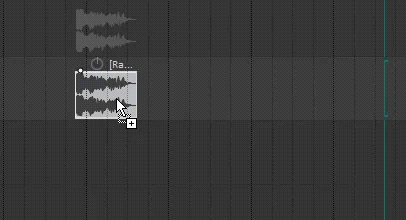
Get Mouse Wheel = Item Rate > https://lhainesaudio.gumroad.com/l/MousewheelItemRate
Peaks & Valleys
Strip Silence and Align Transients of Items Vertically.
Script by Kusa
On first glance, this script doesn’t seem all too different from the Dynamic Split option that ships with vanilla REAPER, but it goes a little further in ways you might find handy for sound design and dialogue editing.
It’s a seriously efficient way of trimming off silence at the end of clips, cutting up “sausage files” of sound effects, or cutting out the silent parts of a vocal performance.
Its interface couldn’t be simpler. Threshold sets the level below which portions of the item will be cut, and Minimum Duration specifies the shortest possible gap it will allow for, avoiding overly erratic cutting.
Clicking Takes (Peak) will split all resulting clips into separate takes on the same track with their transient peaks precisely aligned. Takes (Start) will align the takes based on their item start point. The peak alignment function specifically comes in handy when working with certain variator scripts (like NVK). Those can automatically cycle through takes for each variation.
Split and Space Items lets you specify by which time interval the resulting items should be split, and simply clicking Split will leave everything in place, simply cutting out the parts that fall below the dB threshold.
Can be found through ReaPack > https://forum.cockos.com/showthread.php?t=286625
Render Blocks
Automate Asset Export and Streamline File Naming.
Script by LKC Tools
As daunting as it might sound when you’re starting out, your workflow will benefit hugely from automating a lot of the very repetitive steps involved in sound design. In fact, REAPER’s open-endedness for automation and scripting is precisely one of the many reasons why it has seen a meteoric rise to becoming the industry standard in game audio.
Render Blocks by LKC is a tool that sped up my workflow by an incredible amount because it lets me set up my asset naming and exporting regimes early on in the process and allows me to stay “in the flow” while designing sound effects, resting assured that everything will go in the right place and have the right file name by the time I hit the Render button.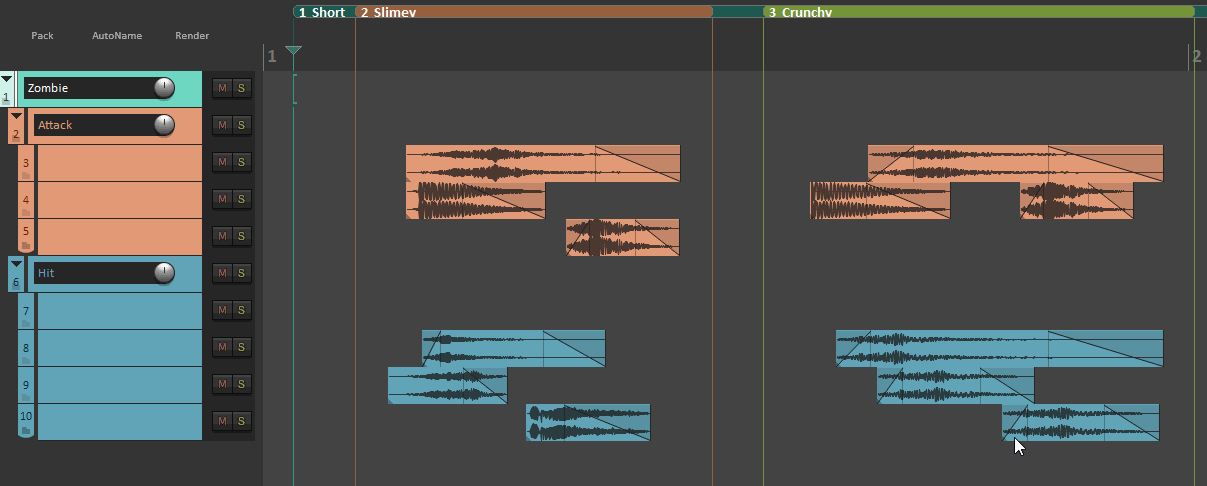
To illustrate how awesome this plug-in is, I’ll explain the example pictured in this GIF straight from the LKC website.
Picture this… You’re designing attack sound effects for a zombie enemy. You create a folder track named Zombie to house the different kind SFX, and create subfolders named Attack and Hit.
In the process, you design “Attack” and “Hit” sounds for a “Short” attack that can either be “Slimey” or “Crunchy”. For organizational purposes, you create a “Short” region to house everything, denoting that both attacks fall into that category; then, you create “Slimey” and “Crunchy” regions within it to make the two attack types easy to find once your project grows.
By selecting everything and running the Render Blocks: Pack command, the selected items intelligently get wrapped into Render Blocks.
Next, by running the AutoName command, it will automatically name the new blocks in the following scheme:
ParentFolder_Subfolder_ParentRegion_ChildRegion
The resulting names will be:
“Zombie_Attack_Short_Slimey” and
“Zombie_Attack_Short_Crunchy”
Finally, when you’re done designing for the day or want to export your creations just far, simply invoking the Render Blocks: Render action will export all of the blocks contained within your time selection as audio files according to your current render settings.
I can’t emphasize enough how much time this script has saved me. Go ahead and grab it! Note: The free version of Render Blocks lets you export up to 10 blocks at once but doesn’t set a limit on how many you can have within your project. The paid versions remove this limitation and offer you a couple more in-depth settings.
The concepts of Render Blocks are expanded even further in LKC’s Grim Sync, a full-on REAPER to Wwise integration platform which allows you to directly interact with your Wwise projects from within REAPER. You can even create containers and folder structures right within the DAW to then reflect in your Wwise project automatically. While technically free, the premium version unlocks all its features and is thus, not part of this article.
Get Render Blocks > https://www.lkctools.com/renderblocks
Stem Manager
Deliver Stems and Alternative Mixes Quickly and Reliably.
Script by Oded Davidof
Exporting stems from a big session, regardless of whether it’s an entire mix for a short film or a musical cue for a game project, can be incredibly tedious. With busses and auxiliary sends to consider, things to mute and un-mute correctly, buss processing to bypass… it leaves a lot of room for error and it’s easy to make mistakes that you won’t notice until you’ve fully played back each and every stem after exporting.
Stem Manager is a straight up life-changing REAPER script that puts you in control of rendering all your stems in one go while allowing you to control exactly what does and doesn’t get rendered. Its GUI features a matrix that lets you easily create a new stem for export and decide exactly which tracks or folders should be included while also offering comprehensive naming tools to add important denominators like BPM, key, custom suffixes or prefixes, and more.
This extension pairs especially well with SWS, because it allows you to perform specific actions before and after rendering, one of the most important ones being the ability to bypass all master bus FX prior to your bounce.
One important note is that it requires a Render Preset to specify your desired encoding settings, so make sure to first open the Render to File window, specify your desired encoding settings, and save it as a preset before trying to export your stems.
The way it works is through the matrix window shown below. Top to bottom are your tracks, left to right marks the custom stems you can create. By default, the horizontal axis will be empty until you click the + button, creating a new stem in the process. From here, simply click the tracks in the grid that you want to include in said stem. Rinse and repeat until you have everything covered. The way the script will then render everything is by literally soloing the desired tracks and busses for each stem selection, making it incredibly reliable as it doesn’t use any proprietary code to perform the actual render process.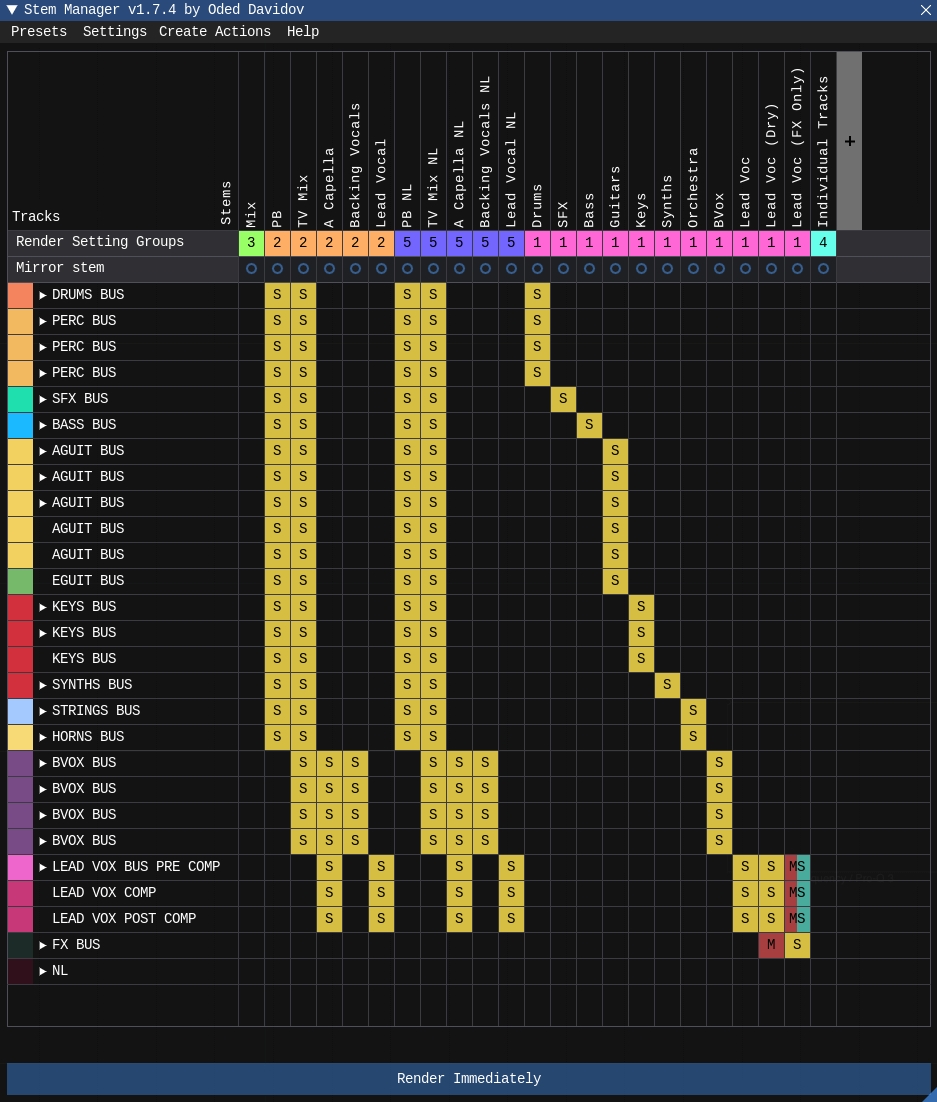
Get Stem Manager > https://forum.cockos.com/showthread.php?t=268512
UCS Toolkit
Designing Sounds for Later Use? UCS Naming Will Make Them Easy to Find.
Script by Tadej Supukovic
As you grow your personal SFX (or sample) library, accurate metadata and searchable file names become increasingly important. The Universal Category System has been established in a collaborative effort between sound industry professionals to create a set of categories and subcategories that could describe pretty much any sound effect in existence. In its most basic form, it is an intuitive file naming scheme which most popular sound library management apps will recognize automatically, making it much easier to find very specific SFX in your library.
The one caveat, of course, is remembering all the different category and subcategory IDs while naming files. This handy script makes it easy, to properly name your SFX right inside of REAPER!
UCS Toolkit allows you to rename tracks and items using the UCS naming scheme while also supporting the incredibly handy Wildcards feature, letting you pull part of the filename from variables like $item, $region, or $marker. This is handy, for example, if you have already labeled your marker with what you want a sound effect to be called. Just insert $region in the FXName field and it will auto-populate.
By the way, looking for the best free SFX Library Manager App? Check out this article!
Get UCS Toolkit > https://forums.cockos.com/showthread.php?t=286234
Wwhisper
Supercharge Your Implementation Practice Routine.
Script by Kusa
This one is for those among you who want to practice audio implementation in WWISE and either have exhausted the demo project avenue or just want to reverse engineer the audio systems behind the sound of certain game sequences. Wwhisper essentially enables REAPER to send game calls directly to Wwise as if it was an actual game engine project!
Through markers, regions, and the two included JSFX plug-ins, you can input triggers within REAPER and then have them call audio events and modulate parameters within your Wwise project.
This allows you to do many different things:
- Create sound re-designs of game captures in a systematic way more akin to actual implementation rather than laying them out in your DAW in a linear fashion.
- Practice game audio implementation without a connected game engine.
- Create procedural music compositions in WWISE and lay out triggers and parameter changes in your REAPER timeline.
- Create a test-environment for Wwise projects you’re working on. Especially handy when working on a game before the engine project even exists.
- Automate your testing process for assets by simulating gameplay.
- Capture a gameplay sequence in the Wwise profiler and export it to Wwhisper to re-play a sequence indefinitely and tweak as you go.
If you’re an intermediate to advanced sound designer looking to get your implementation chops up to speed, this is one of the best ways to do it!
Get Wwhisper > https://github.com/TFKusa/kusa_reascripts/blob/master/Documentation/WWHISPER%20-%20DOCUMENTATION.md
ReaOpen
Need to Tweak SFX or Music During Implementation? This is the Way.
Script by LKC Tools
Are you finding yourself implementing your audio assets in Wwise or FMOD and realize you need to make some last-minute changes? ReaOpen is a killer script that allows you to open the REAPER project pertaining to your sound effects (or music tracks) right from your middleware and even your file explorer!
All that’s required in your rendering process is checking the “Include project file name in BWF data” option which will provide the information necessary for ReaOpen to be able to locate your project.
After installing the REAPER extension, you’ll have to install the native tool for your operating system which makes it available to select as an external editor for Wwise, FMOD, and within other DAWs. Then, with some quick manual setup, you can also add it as an option to your context menu on Windows, allowing you to open the original project for any audio file you exported out of REAPER right from the File Explorer.
If you like creating different (sub)projects for individual sound design elements of your project then this tool is an incredible workflow accelerator if you find yourself needing to make changes on the fly, add some more variations, or tweak your processing chain a little.
TL;DR: ReaOpen allows you to open the original REAPER project at the precise location a sound was exported from straight from your file explorer, middleware, or other DAWs.
Get ReaOpen > https://www.lkctools.com/reaopen
Proper Nudging
Create This Custom Action to Make Syncing to Picture Less of a Pain.
Nudging is an indispensable tool when trying to sync sound effects to picture. Being able to move your play head and items one frame at a time makes this a lot easier than clicking and dragging until you hit the spot. The problem with nudging in REAPER is that it doesn’t move the play cursor with the item, thus not letting you get a sense of your sync to video.
By setting up these simple actions, you can nudge backwards and forwards with your play cursor (or play head) following suit, allowing you to sync items to video much more precisely than with REAPER’s native nudge feature.
First, press the N key or go to Edit > Nudge/Set Items to open the nudge settings window.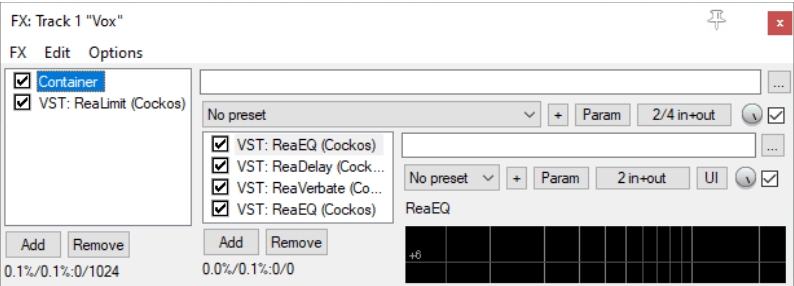
Here, click the last dropdown on the right and select Frames as your unit of time. You can now close the dialogue and open the Action List by pressing “?” or clicking Actions > Show action list.
In the Action List, click New Action and create two new ones according to the settings below. The way to find the two actions necessary for Nudge + and Nudge – are shown below and can be found if the action list shown on the left of the Custom Action window.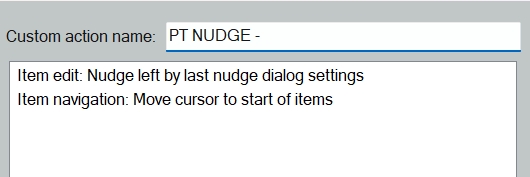

You can then add any shortcut you like to these two actions to make them easily accessible, for example, the left and right arrow keys. I personally have mapped them to the dial on my macro pad, letting me smoothly nudge items by simply turning it left or right.
Hidden in Plain Sight
Lesser known REAPER Features to Up Your Game (Audio)
These tools already ship with every version of REAPER but are not necessarily the easiest to find. Check out some of my favorite semi-hidden features and learn how they can help make your creative process faster and more productive:
Rubber Band Library & Rrrreeeaaaa [Slowed+Reverb]
Stretch Sounds Into Oblivion and Discover new Possibilities.
Want to turn a song into a giant ambient pad? Turn almost anything into a drone? Create awesome transitions and glitchy Sci-Fi ambiences? These two time stretching algorithms that ship natively with REAPER are insanely useful sound design tools.
While algorithms like Elastique Pro 3 are best for musical applications like correcting timing on drums or aligning vocal stacks, they quickly fall apart when you start to really stretch out clips further than a couple 8th notes. Their intention was to sound musical in a musical context.
What we want to do is discover new sonic flavors within material that we record or source from our libraries and manipulate these sounds to bring virtual worlds to life.
Rrrreeeaaaa is the youngest of REAPER’s time stretching algorithms and has been added in 2023. Its main purpose is to completely transform sounds through time compression and expansion in ways that are anything but clean. It’s sonically similar to the renowned PaulXStretch plug-in albeit much easier to use. When stretching items to an extreme degree, Rrreeeaaa sounds deliciously lush, verby, and otherworldly in ways that make it incredibly handy for creating weird drones, spooky ambiences, and extract tonal material from not very tonal sources. Since it uses a resynthesis method that goes way over my head, there will never be noticeable choppiness or graininess, no matter how far you stretch your clips.
Rubber Band Library is a far more artifact-rich algorithm but has a ton of flexibility under the Mode dropdown that lets you pick your desired flavor of digital stretching artifacts. It’s an amazing algorithm for glitchy textures, weird technology-related sounds, and for times where you want to make something sound like it has been compressed very badly.
HTML Render Statistics
Keep Track of Your Loudness over Time With Each Bounce.
The higher the stakes for your project, the more important loudness compliance will be. Especially in projects where you end up creating hundreds and thousands of assets it will make everyone’s lives a lot easier if they are all being delivered at consistent, agreed-upon loudness levels. This is crucial at the implementation stage, where you or your technical sound designer / audio programmer shouldn’t have to spend extra time adjusting the mix just because an asset has been revised.
REAPER’s render statistics are yet another incredible feature that should be the standard everywhere. With each bounce, you can have REAPER create corresponding statistics that include :
- Integrated Loudness / LUFS- I (total dB LUFS value over entire duration)
- Momentary Loudness / LUFS-M (dB LUFS value over .4 seconds, averaged over entire duration)
- Short-Term Loudness / LUFS-S (dB LUFS value over a 3 second period, averaged over entire duration)
When hovering over the waveform, you’ll also be able to see momentary and short-term loudness at any given point of the file. And the best thing yet, you can even show your markers and regions, incredibly handy when inspecting a final mix of any piece of longer-form content (think a cinematic or musical cue).
To export stats alongside your file, simply check “save outfile render_stats.html” in the render window. This can also be done in a dry run if you just want to see how your mix is doing at the moment. For that, simply click the “Dry run (no output)” button and you will just receive your handy statistics file.

Monitoring FX for Tools, Metering and more.
Speed up Bouncing, De-Clutter Your Master Bus Signal Chain, Avoid Accidents.
We all love our metering plug-ins, room correction, and, of course, Global Sampler… However, adding all these on your master bus can clutter up your FX chain pretty quickly, especially when you’re also using various plug-ins for saturation, buss compression, tape emulation, etc.
Worse still, if you’re using room correction plug-ins like SoundID Reference, you might end up forgetting to bypass the plug-in before, resulting in a track that has your room correction curve and attenuation applied – sounding very weird as a result.
This is why I think REAPER’s dedicated Monitor FX chain is one of its biggest “why doesn’t every DAW have this?!” features.
Essentially, it’s just a dedicated FX chain that sits after the master bus and receives all audio that is output by the DAW – click included. Plug-ins added here will not be processed during a bounce, which can help speed up the render process slightly, too.
It’s a great place to insert your loudness meter, spectrum analyzer, the Global Sampler plug-in, your speaker/room correction suite, or any other tools you don’t want affecting your final render.
Top open the signal chain, simply click View > Monitoring FX in the menu bar.
Mix Knobs Everywhere!
Use Any Plug-In for Parallel Processing.
Want a weapon to have both a strong attack transient and a fat sounding tail? Want to distort a sound heavily but still maintain bottom-end and high-end clarity? Parallel processing might be the answer you seek.
To put it simply, parallel processing means to blend a processed signal with the unprocessed version of that very same signal. By far the most common application for this is parallel compression, where you’d mix the dry signal with the compressed one in order to maintain overall punchiness and definition while significantly beefing up your source material.
In the “olden days”, this method of processing would have to be achieved by sending your clean signal – pre-fader – to an Auxiliary Bus with the desired effect in its signal chain and using the two tracks’ volume faders to control the blend.
In recent years, a lot more plug-ins have started featuring integrated mix knobs to allow this kind of processing without any need for routing. However, this feature is still not commonplace enough and some of the best plug-ins on the market still lack this functionality.
The per-effect mix knob is a feature that is (as far as I’m aware) unique to REAPER and allows you to use any plug-in in parallel with your track’s clean signal. Dial in your effect and play with this knob until you achieve your desired blend. It couldn’t be easier and it’s truly a feature every DAW should have!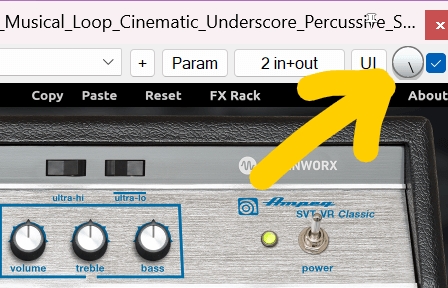
New: Parallel Effects Chains
Split your FX Chains In-Line and Without Routing
This new feature takes parallel processing up a notch and lets you not only run plug-ins in parallel to your clean signal, it allows you to split your signal chain into separate chains of plug-ins that can run in parallel.
This opens up tons of possibilities for sound design and mixing that would’ve previously required tedious routing. For example, you could process your sound with reverb and delay independently or blend different modulation effects by creating a parallel processing branch.
To do so, simply right click the plug-in before which you want to split your signal chain and click Run selected FX in parallel with previous FX. Done.
This can even be used alongside the next feature, making for seriously deep FX routing possibilities without even using any any AUX busses.
Review the guide What’s new in REAPER Version 7 for more info.
New: FX Containers
Build and Recall FX Chains Within a Single Insert Slot.
FX Containers are somewhat similar to Effect Racks in Ableton Live, allowing you to store entire signal chains within a single container for quick recall and more flexible routing. However, this feature is a little more involved in REAPER and also offers some additional routing functionality for parallel processing.
When adding an FX container, you can give it any number of inputs, theoretically allowing for near infinite parallel processing options within a single FX chain component. In the picture below, you see the track’s FX chain window with the Container plug-in selected. This will bring up a second FX chain to the right of the track’s FX list, showing all the plug-ins contained within the Container.
These combinations of plug-ins can of course be saved as presets, letting you more easily combine several chains of plug-ins.
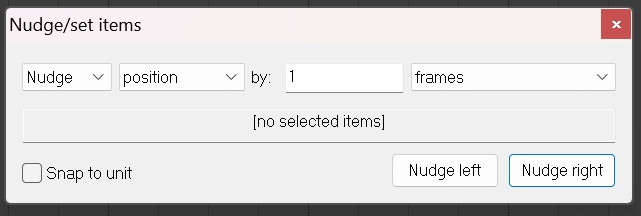
• How ChatGPT’s AI can be used to create custom REAPER scripts
• REAPER for Game Audio – Getting Started & Rendering
• Reaper for Game Audio: Project Scopes & Subprojects
• Make the most of REAPER as a sound design tool – part 1: Getting Started
• Make the most of REAPER as a sound design tool – part 2: Workflow
• 5 useful tips for making the most of REAPER
• Video: How to edit and process field recordings entirely in REAPER
• The Rise of Reaper – with Justin Frankel
• Here’s what’s new in REAPER 7 – an excellent video overview by Jon Tidey
↑ Back to top


